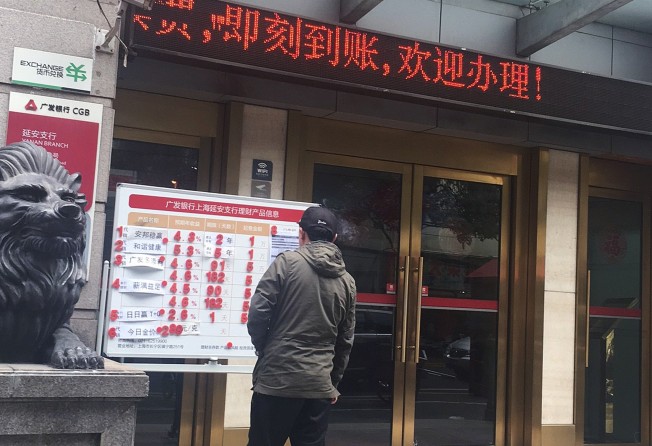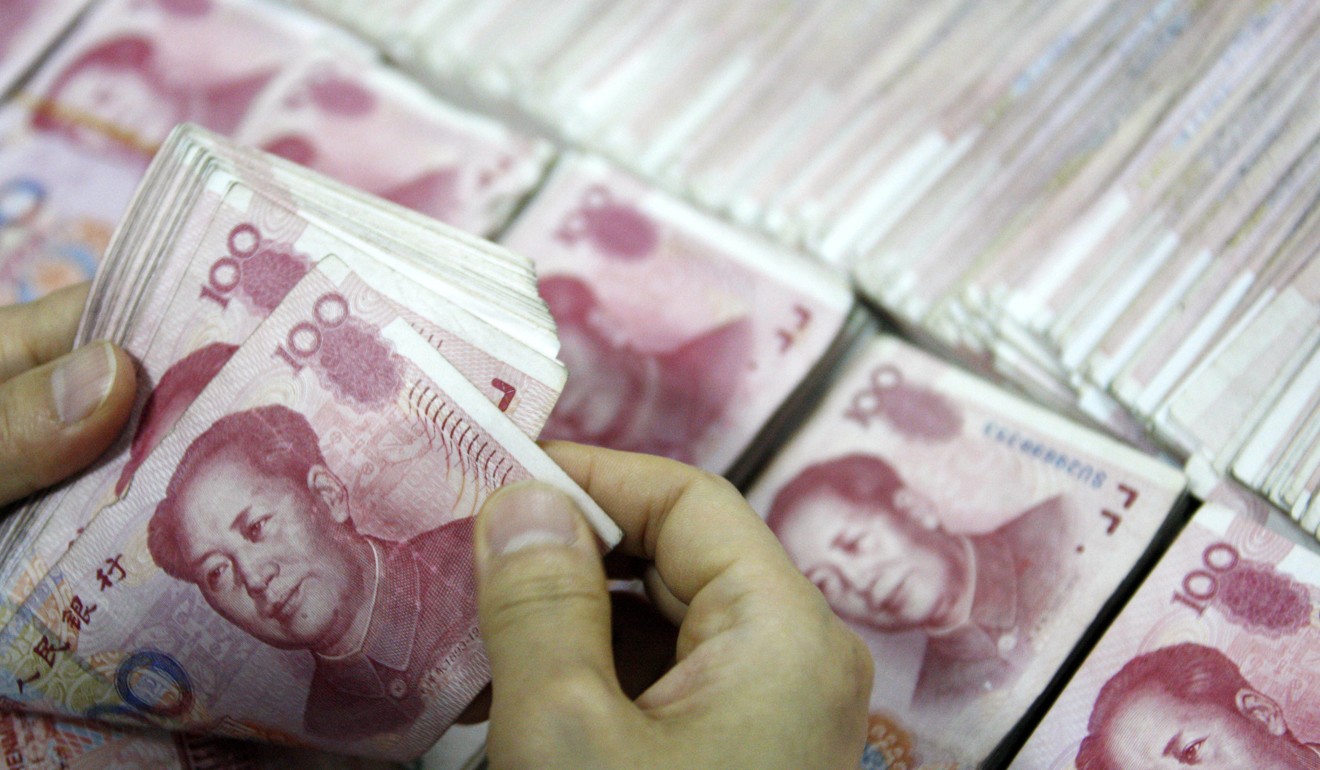Risks to China’s financial system may continue to grow despite tighter regulations
Tightening aimed at reducing leverage in financial sector, especially assets funded by wealth management products – but this may lead to unintended consequences of higher risk in other shadow-banking activities

China’s regulatory tightening is aimed at reducing leverage in the financial sector, especially in assets funded by wealth management products.
But this may lead to unintended consequences of higher risks in other shadow-banking activities amid a shift in composition of the banking sector, analysts say.
The People’s Bank of China raised short-term policy rates twice this year and implemented a tougher macro-prudential assessment system for financial institutions.
The China Banking Regulatory Commission is also stepping efforts in curbing risks of wealth management products and trusts, borrower guarantee chains, and online lending.
At least 17 financial institutions faced fines and were warned for indulging in irregular arbitrage, illegal transactions and improper fees as a result. The head of China Insurance Regulatory Commission was also arrested in the latest wave of anti-corruption campaign.
The expansion of China’s shadow banking activity – where lending is not provided nor regulated under the formal banking sector – continues to be propelled by assets funded by wealth management products, which now accounts for 47 per cent of the sector’s revenue.
Moody’s estimates assets within the shadow banking sector grew 21 per cent in 2016 to reach 64.5 trillion yuan (US$9.4 trillion), equivalent to 87 per cent of GDP. While still rapid, the pace of growth represents a slowdown from the 30 per cent rate in 2015.
While deleveraging and reduced financial speculation are positive for the long-term development of financial markets, high lending rates and slowing credit growth could weigh on economic growth.
“If banks are forced to scale back off-balance sheet wealth management products or to slow credit growth, that could lead to rising near-term defaults and asset quality risks as some borrowers of shadow banking loans may not be able to rollover their loans,” HSBC said in a research note.
Regulations targeted at curtailing the wealth management products sector is restricting other parts of the financial system too, and causing systemic liquidity conditions to tighten, as reflected in the rise of the 7-day interbank repurchase rate which reached 5 per cent in late March, and the widening spread between wealth management product yields and the one-year benchmark deposit rate.
Borrowers in sectors such as property, local government financing vehicles and industries burdened by overcapacity face reduced access to traditional bank loans and the domestic bond market.
For example, China’s onshore bond issuance dropped 31 per cent in the first four months of 2017 from a year earlier mainly because tightening liquidity caused by policymakers’ aim to deleverage the financial sector, with the trend expected to continue in coming months, according to David Yim, Greater China head of debt capital markets at Standard Chartered Bank.

Tighter systemic liquidity in the financial system, and reduced access to traditional banking credit may force companies to resort back to entrusted loans and trust loans, leading to a rebound in “core” shadow banking activities growth in the first quarter after slowing to a near stall in 2016, analysts say.
Trust loans are made by Chinese trust companies and are often funded through structuring loans into wealth management products with banks acting as distribution channels. Entrusted loans are those between companies, with banks acting as agents to the transaction.
“The up-tick in core shadow banking may reflect tighter financing conditions elsewhere, especially as access to traditional banking credit and the domestic bond market to corporate borrowers becomes more restricted,” Moody’s said, adding there have been delays in publishing official wealth management products data, which would shed more light on the impact of increasingly stringent regulations on bond holdings and the share of interbank investors in the banks’ WMP business.
Transparency of the shadow banking sector will worsen if the data remains unavailable.
The up-tick in core shadow banking may reflect tighter financing conditions elsewhere, especially as access to traditional banking credit and the domestic bond market to corporate borrowers becomes more restricted
Moreover, while banks have been given very detailed checklists for self-assessment, the documents are unclear about how banks should change if they are violating the guidelines.
Inappropriate transactions are a system-wide phenomena in China and every commercial bank is involved in at least some of the long list of activities now being targeted by regulators.
At the same time, the shifting financial sector composition in China points to higher financial vulnerability.
The share of the financial system accounted for by large state-owned banks has declined significantly since the start of the decade as the asset growth of mid- and small-sized banks has outpaced that of larger banks. Assets of non-bank financial institutions have also more than doubled as a share of financial system assets.
Tighter systemic liquidity could crystallise the risks inherent in the more complex and opaque funding structures used by smaller banks owing to multiple layers of credit transactions.
“The interconnectedness between mid- and small-sized banks and the shadow banking sector continues to grow, increasing the risk that funding structures could become fragile if confronted with a negative liquidity shock,” says Michael Taylor, a Moody’s Managing Director.
These banks are vulnerable to the withdrawal of wholesale funding, which they have used to finance their investments in trust and asset management schemes offered by non-bank financial intermediaries to boost profitability, as well as to circumvent capital restrictions on lending, Moody’s said.